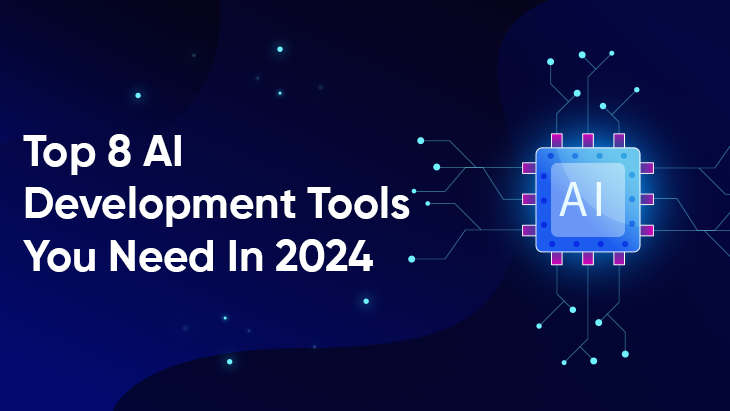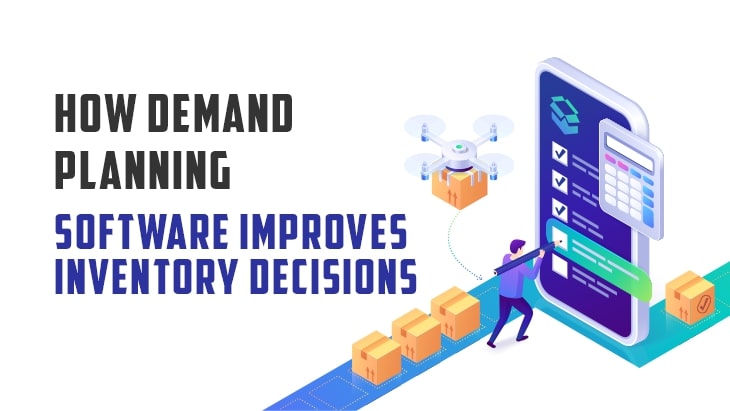In 2024, staying ahead means harnessing the most powerful and efficient tools available. Whether you're pioneering groundbreaking AI applications or integrating intelligent features into existing solutions, the right tools can significantly amplify your development capabilities.
In this article, we will delve into the top AI development tools that are shaping the future of technology, and prepare to unlock a world of possibilities that can elevate your projects to the pinnacle of innovation and efficiency. Let’s start!
How Developers Use AI Tools?
Artificial Intelligence (AI) is revolutionizing the way developers approach problem-solving and innovation, offering unprecedented capabilities across various domains. By leveraging artificial intelligence development services, developers are enhancing efficiency and pioneering solutions that were once deemed impossible. Here are some of the pivotal use cases of AI in development:
1. Automated Code Generation
Leveraging AI for automated code generation is revolutionizing the way developers write code. By understanding the requirements specified in natural language, AI tools can generate functional code snippets, frameworks, or even entire applications, significantly reducing development time and effort while increasing productivity.
2. Deciding on the App's Architecture
AI-driven tools are now capable of analyzing project requirements to suggest the most efficient and scalable application architecture. This not only aids developers in making informed decisions early in the development process but also ensures that the application can handle future demands, integrate with other systems seamlessly, and maintain high performance.
3. Automated Software Testing
AI algorithms can automate the process of software testing, identifying bugs and errors more efficiently than traditional methods. This not only speeds up the development cycle but also enhances the quality of the final product.
4. Natural Language Processing (NLP) for Chatbots
Developers use NLP to create applications that understand human language, enabling functionalities like chatbots, sentiment analysis, and language translation services.
5. Machine Learning (ML) for Predictive Analytics
ML algorithms are employed to analyze patterns in data, predicting future trends and behaviors. This is crucial in fields like finance for stock predictions, retail for customer purchase behavior, and healthcare for disease forecasting.
6. Smarter IoT Devices
The use of AI enhances the functionality of IoT devices, making them smarter, says Forbes. Developers integrate AI to analyze data from sensors in real time, optimizing energy usage in smart homes, improving predictive maintenance in manufacturing, and personalizing health and fitness recommendations.
7. New Level of Game Development
Artificial Intelligence development tools are used to create more realistic and challenging non-player characters (NPCs), as well as to generate dynamic content that adapts to the player's style, enhancing the gaming experience.
8. Personalization and Recommendation Engines
By analyzing user data, AI enables the creation of personalized user experiences and recommendation systems for e-commerce, streaming services, and content platforms, significantly increasing engagement and satisfaction.
The enumerated above use cases demonstrate the expanding role of AI in simplifying and enhancing the development process, showcasing its ability to automate complex tasks and provide strategic insights.
Now, let’s look closer at the top AI tools used by developers in 2024 to create game-changing software solutions.
Top 8 AI Development Tools and Frameworks in 2024
As we stride into 2024, the AI landscape is brimming with tools and frameworks designed to empower developers and researchers alike. Below, we'll explore the top 8 artificial intelligence development tools and frameworks that are pivotal for any developer looking to harness the power of artificial intelligence in their projects:
1. Scikit Learn
A cross-platform Python library designed for machine learning, offering a range of algorithms for classification, regression, clustering, and more.
Languages: Python
Advantages: Extensive documentation, ease of use, and a broad collection of algorithms make it ideal for beginners and experts.
2. TensorFlow
An open-source cross-platform framework developed by Google for deep learning and machine learning tasks.
Languages: Python, C++
Advantages: Scalability, extensive community support, and flexibility in building and deploying ML models, from research to production.
3. PyCharm
An integrated cross-platform development environment (IDE) for Python, optimized for AI development with support for many AI libraries and frameworks.
Languages: Python
Advantages: Smart code navigation, debugging tools, and built-in support for scientific tools make it highly efficient for AI development.
4. Caffe
A deep learning cross-platform framework known for its speed and modularity, particularly suited for image classification and convolutional neural networks.
Languages: C++, Python
Advantages: Exceptional speed in model training and execution, with a focus on image processing.
5. Keras
A high-level cross-platform neural networks API, running on top of TensorFlow, designed for fast experimentation.
Languages: Python
Advantages: User-friendly, modular, and extensible, Keras simplifies the creation of complex neural networks.
6. ChatGPT
A variant of the GPT (Generative Pretrained Transformer) model tailored for generating human-like text based on prompts.
Languages: Primarily interacts in natural language
Advantages: Advanced natural language processing capabilities, making it suitable for chatbots, content generation, and more.
7. Gemini
An emerging cross-platform AI tool focused on simplifying the deployment of machine learning models across various platforms.
Languages: Python
Advantages: Streamlines the model deployment process, offering a seamless transition from development to production.
8. Microsoft Azure AI Platform
A comprehensive suite of AI services and cognitive APIs designed to build intelligent applications in the Azure Cloud platform.
Languages: Python, C#, and others
Advantages: Wide range of AI tools and services, integration with Azure cloud services, and scalability.
Navigating the AI Development Frontier with Cutting-Edge Tools
As we've journeyed through the landscape of artificial intelligence in 2024, it's clear that the tools and frameworks available to developers are more powerful and accessible than ever before. From the versatility of Scikit Learn and TensorFlow for machine learning projects to the development efficiency offered by PyCharm, and from the specialized capabilities of Caffe and Keras in deep learning to the innovative conversational models like ChatGPT, each tool and framework brings its unique strengths to the table.
As developers and technologists, our challenge and opportunity lie in selecting the right combination of these tools to suit our specific project needs, skill sets, and strategic goals. By leveraging the top AI development tools and frameworks of 2024, we can push the boundaries of what's possible, driving forward into a future where artificial intelligence transforms every aspect of our digital lives.

















Post Comments